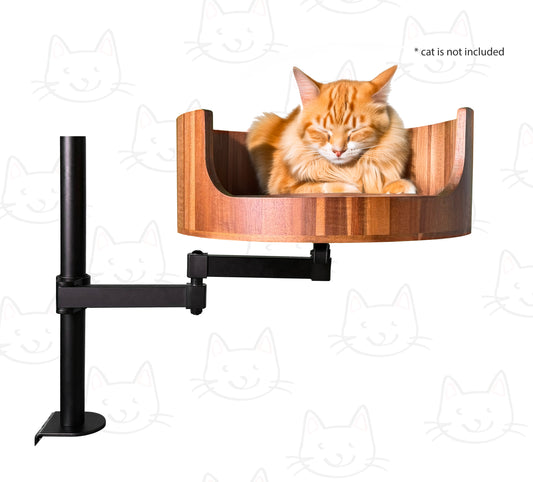
How Common Is Polydactyly in Cats: An Overview
Share
Polydactyly, or extra toes, is a fascinating genetic trait that is relatively common in cats. While most felines have five toes on their front paws and four on their back paws, polydactyl cats can have up to seven or more toes on each paw. This unique characteristic has intrigued cat lovers and researchers alike, leading to a deeper exploration of its prevalence and implications in domestic feline populations.
In this article, we will provide an overview of polydactyly in cats, including how common it is, the possible genetic causes behind this trait, and the various types of polydactyly that can occur. Additionally, we will discuss the history of polydactyl cats, famous examples of polydactyl felines, and any potential health concerns associated with this condition. By the end of this article, readers will have a comprehensive understanding of polydactyly in cats and a newfound appreciation for these unique and quirky creatures.
1. Polydactyly is a congenital condition characterized by extra toes on a cat's paws, which can occur in various breeds.
2. The prevalence of polydactyly varies among different regions and populations, with some geographic areas showing higher rates of occurrence.
3. Polydactyl cats are popular in certain cultures and are often considered lucky or special.
4. While polydactyly is generally harmless, it can sometimes lead to health issues such as difficulty grooming or walking.
5. Breeders often use polydactyl cats to perpetuate this unique trait in specific lines, leading to a higher incidence in certain breeds.
What is Polydactyly in Cats?
Polydactyly is a genetic anomaly that results in cats being born with extra toes on one or more of their paws. This condition is relatively rare but can be seen in various cat breeds. While the normal cat has five toes on their front paws and four on their back paws, polydactyl cats can have up to seven toes on each paw. The extra toes can be fully formed with claws and pads, or they may be smaller and not functional.
Prevalence of Polydactyly in Cats
Polydactyly is more common in certain cat breeds than others. One of the most well-known breeds that often exhibit polydactyly is the Maine Coon. Approximately 40% of Maine Coon cats have some degree of polydactyly. Other breeds that have a higher incidence of polydactyly include the American Bobtail, Pixiebob, and Hemingway (or Polydactyl) cats. However, polydactyly can also occur sporadically in mixed-breed cats.
Genetics of Polydactyly in Cats
Polydactyly in cats is thought to be inherited as a dominant trait, meaning that only one parent needs to carry the gene for their offspring to exhibit the condition. The specific gene responsible for polydactyly in cats has been identified as the Pd gene. When a cat inherits the Pd gene from one or both parents, they are more likely to have extra toes. The severity of polydactyly can vary depending on the specific genetic mutation.
Implications of Polydactyly in Cats
While polydactyly is generally considered a harmless condition in cats, it can sometimes lead to issues such as difficulty grooming or discomfort due to extra toes rubbing against each other. In some cases, polydactyl cats may require specialized grooming or even surgical intervention to address any problems that arise from the additional toes. However, many polydactyl cats lead perfectly normal lives and may even have an advantage in activities that require dexterity, such as climbing or hunting.
Frequently Asked Questions about Polydactyly in Cats
How common is polydactyly in cats?
Polydactyly, or having extra toes, is a rare condition in cats. It is estimated that around 40-50% of cats with polydactyly have it on their front paws, while only 10-15% have it on their hind paws.
Is polydactyly a genetic trait in cats?
Yes, polydactyly is believed to be a genetic trait in cats. It is thought to be inherited through a dominant gene, which means that if one parent carries the gene for polydactyly, their offspring have a higher chance of inheriting the trait.
Can polydactyly cause health problems in cats?
In most cases, polydactyly does not cause any health problems in cats. However, in rare cases where the extra toes are not fully formed or cause discomfort, surgical intervention may be necessary to correct any issues.
Can polydactyly be prevented in cats?
Since polydactyly is believed to be a genetic trait, it is difficult to prevent in cats. Breeders who wish to avoid polydactyly in their litters can selectively breed cats without the polydactyly gene, but this is not a guaranteed method of prevention.
In conclusion, while polydactyly is a relatively uncommon condition in cats, it is important for cat owners to consider their furry friends' comfort and wellbeing. This is where the Desk Cat Bed comes in as a valuable choice for pet owners. With its cozy and elevated design, the Desk Cat Bed provides a comfortable and safe resting place for cats with polydactyly or any other special needs. Its ergonomic design helps to alleviate any discomfort or limitations caused by the condition, ultimately enhancing the quality of life for polydactyl cats. By choosing the Desk Cat Bed, pet owners can ensure that their feline companions receive the support and comfort they need to thrive.



















































